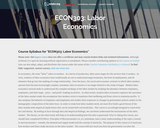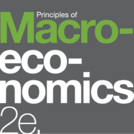
In economics, the term 'labor' refers to workers. As a factor of production, labor earns wages for the services that it renders. As such, students of labor economics have traditionally set out to understand wage formation, the level of employment, and all elements that go into the making of a wage relationship. Over the years, the social and economic contexts in which labor markets operate have become increasingly complex; nowadays, labor economics is no longer limited to the study of wages. Modern labor economics instead seeks to understand the complex workings of the labor market by studying the dynamics between employers, employees, and their wage-, price-, and profit-making incentives. In other words, modern labor economics explores the outcomes of the labor market under the assumption that workers strive to maximize their wellbeing and firms strive to maximize profits. It also analyzes the behavior of employers and employees and studies their responses to changes in government policies and/or in the demographic composition of the labor force. Upon successful completion of this course, students will be able to: Demonstrate an understanding of basic labor economics theory, including labor market structures and wage determination; Apply their understanding of theoretical models to analyze trends in data pertaining to topics in labor economics; Apply their understanding of theoretical models to case studies presented in the course; Construct, defend, and analyze important labor policy issues; Comprehend, assess, and criticize existing empirical work in labor economics. (Economics 303)
- Subject:
- Economics
- Social Science
- Material Type:
- Full Course
- Provider:
- The Saylor Foundation
- Date Added:
- 04/29/2019



